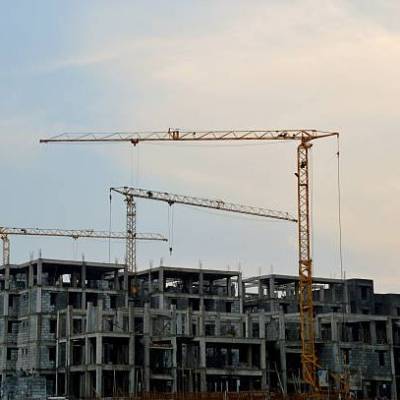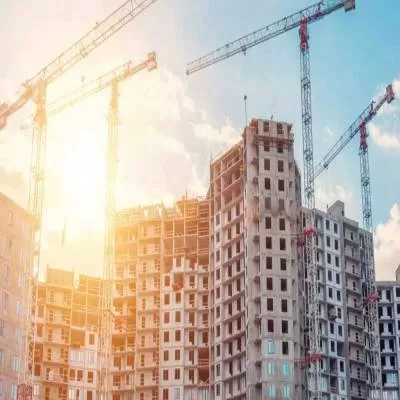- Home
- Real Estate
- Treatment of home buyers as financial creditors could impact real estate sector asymmetrically
Treatment of home buyers as financial creditors could impact real estate sector asymmetrically
Drawbacks for lenders of developers: As operational creditors, home buyers’ interests are not fully optimised up till now, as opposed to other operational creditors in other business under the ambit of IBC. With the proposed revision, home buyers will be equally treated with financial lenders in the liquidation proceeds of the defaulting builder. However, this could negatively impact the lenders since the recovery proceeds will now have another layer of distribution, which was not factored in at the time of origination of loan to the developer. This would effectively increase the realised haircuts for the financers. In other words, without changes in probability of default, loss given default (LGD) could increase for the financiers.
On the contrary, home buyers could recover some portion of their dues in case the builder defaults as against the current scenario where buyers have to depend on the residual value after financial creditors are paid, which entails higher hair-cuts. Ind-Ra believes end-users’ propensity to initiate case under the IBC would be much lower than investors’, considering the end-use and emotional attachment with the property for the former.
Repricing of lending yield for financiers: Ind-Ra believes that with the dilution of lenders’ right in liquidation proceeds, financiers have to start repricing lending yields. As a result, borrowing rates could harden for developers relative to their credit profiles. However, Ind-Ra believes through-the-cycle probabilities of default and LGDs are yet to be established for financiers, considering most players are yet to see a full cycle apart from the rampant refinancing prevailing in the developer financing space. However,, the increased borrowing cost may not materially increase the end-value of real estate, since institutional lending forms 20-30 per cent of the total value, with the balance coming from buyers’ construction-linked receipts. Ind-Ra believes developers would absorb the likely incremental costs, with limited market readiness to absorb price rise as well as existing inventory dynamics in most markets. This would also affect private equity financing, given their structure of funding.
Benefits for homebuyers: Homebuyers will share equal priority, in terms of default waterfall, with lenders, in case of bankruptcy-led liquidation. Accordingly, they will form a part of the committee of creditors that approves a resolution plan and their voting rights will be in line with their advances. However, the final contours of the code needs to be seen for smooth functioning of the committee, considering several home buyers and voting rights. This will strengthen home buyers’ right and power in case of bankruptcy of the developer and any default in payment or planned schedule.
Long-term positive for housing financiers: Besides homebuyers, the ordinance will benefit housing financing companies’ asset quality, especially developer-led originations, though with a lag. Housing finance companies, though not a direct beneficiary of the policy change, could get some comfort as buyers’ (home loan taker) rights over a defaulting builder and cash flows on liquidation will enhance. Eventually, with increasing customer confidence there will be more takers for home loans, benefiting housing financiers.
Impact on recovery from delinquent assets: In the current financing landscape, majority delinquent real estate assets are either restructured or taken over by new sponsors and subsequently refinanced – especially when the project is structured as a special purpose vehicle. Therefore, it is only in cases where the developer is under extreme financial duress that financial institutions are likely to proceed under the IBC.
The increase in LGD shall be contingent on the specific contours of the change in the IBC framework. In case homebuyers are treated as unsecured financial creditors, their claims shall be subordinated to the claims of senior secured creditors such as financial institutions. In such cases, financers may proceed with liquidation of the assets over which they have specific charge and therefore, their haircuts will only be to the extent of the shortfall between the realisable value of the asset charged to them in relation to the outstanding liabilities towards them. It is noteworthy, that often in non-performing assets, the shortfall between realisable value of charged assets and outstanding debt is substantial. On the other hand, in case the claims of home buyers are to be treated equally with that of the secured creditors, the extent of haircut shall be far higher.
The agency believes this amendment will not have any impact on the residential mortgage-backed securitisation market. In general, such transactions are backed by fully disbursed loans. This ensures fully completed properties or properties at advance stages of completion or delivery to homebuyers; hence, there will be limited impact on this segment.
India Ratings and Research (Ind-Ra) believes the cabinet ordinance to treat home buyers as financial creditors rather than operational creditors under the Insolvency and Bankruptcy Code 2016 (IBC) could be credit negative for the lenders of developers, while it may strengthen real estate buyers’ (end-customers) protection and boost the customer sentiment. Drawbacks for lenders of developers: As operational creditors, home buyers’ interests are not fully optimised up till now, as opposed to other operational creditors in other business under the ambit of IBC. With the proposed revision, home buyers will be equally treated with financial lenders in the liquidation proceeds of the defaulting builder. However, this could negatively impact the lenders since the recovery proceeds will now have another layer of distribution, which was not factored in at the time of origination of loan to the developer. This would effectively increase the realised haircuts for the financers. In other words, without changes in probability of default, loss given default (LGD) could increase for the financiers. On the contrary, home buyers could recover some portion of their dues in case the builder defaults as against the current scenario where buyers have to depend on the residual value after financial creditors are paid, which entails higher hair-cuts. Ind-Ra believes end-users’ propensity to initiate case under the IBC would be much lower than investors’, considering the end-use and emotional attachment with the property for the former. Repricing of lending yield for financiers: Ind-Ra believes that with the dilution of lenders’ right in liquidation proceeds, financiers have to start repricing lending yields. As a result, borrowing rates could harden for developers relative to their credit profiles. However, Ind-Ra believes through-the-cycle probabilities of default and LGDs are yet to be established for financiers, considering most players are yet to see a full cycle apart from the rampant refinancing prevailing in the developer financing space. However,, the increased borrowing cost may not materially increase the end-value of real estate, since institutional lending forms 20-30 per cent of the total value, with the balance coming from buyers’ construction-linked receipts. Ind-Ra believes developers would absorb the likely incremental costs, with limited market readiness to absorb price rise as well as existing inventory dynamics in most markets. This would also affect private equity financing, given their structure of funding. Benefits for homebuyers: Homebuyers will share equal priority, in terms of default waterfall, with lenders, in case of bankruptcy-led liquidation. Accordingly, they will form a part of the committee of creditors that approves a resolution plan and their voting rights will be in line with their advances. However, the final contours of the code needs to be seen for smooth functioning of the committee, considering several home buyers and voting rights. This will strengthen home buyers’ right and power in case of bankruptcy of the developer and any default in payment or planned schedule. Long-term positive for housing financiers: Besides homebuyers, the ordinance will benefit housing financing companies’ asset quality, especially developer-led originations, though with a lag. Housing finance companies, though not a direct beneficiary of the policy change, could get some comfort as buyers’ (home loan taker) rights over a defaulting builder and cash flows on liquidation will enhance. Eventually, with increasing customer confidence there will be more takers for home loans, benefiting housing financiers. Impact on recovery from delinquent assets: In the current financing landscape, majority delinquent real estate assets are either restructured or taken over by new sponsors and subsequently refinanced – especially when the project is structured as a special purpose vehicle. Therefore, it is only in cases where the developer is under extreme financial duress that financial institutions are likely to proceed under the IBC. The increase in LGD shall be contingent on the specific contours of the change in the IBC framework. In case homebuyers are treated as unsecured financial creditors, their claims shall be subordinated to the claims of senior secured creditors such as financial institutions. In such cases, financers may proceed with liquidation of the assets over which they have specific charge and therefore, their haircuts will only be to the extent of the shortfall between the realisable value of the asset charged to them in relation to the outstanding liabilities towards them. It is noteworthy, that often in non-performing assets, the shortfall between realisable value of charged assets and outstanding debt is substantial. On the other hand, in case the claims of home buyers are to be treated equally with that of the secured creditors, the extent of haircut shall be far higher. The agency believes this amendment will not have any impact on the residential mortgage-backed securitisation market. In general, such transactions are backed by fully disbursed loans. This ensures fully completed properties or properties at advance stages of completion or delivery to homebuyers; hence, there will be limited impact on this segment.






















